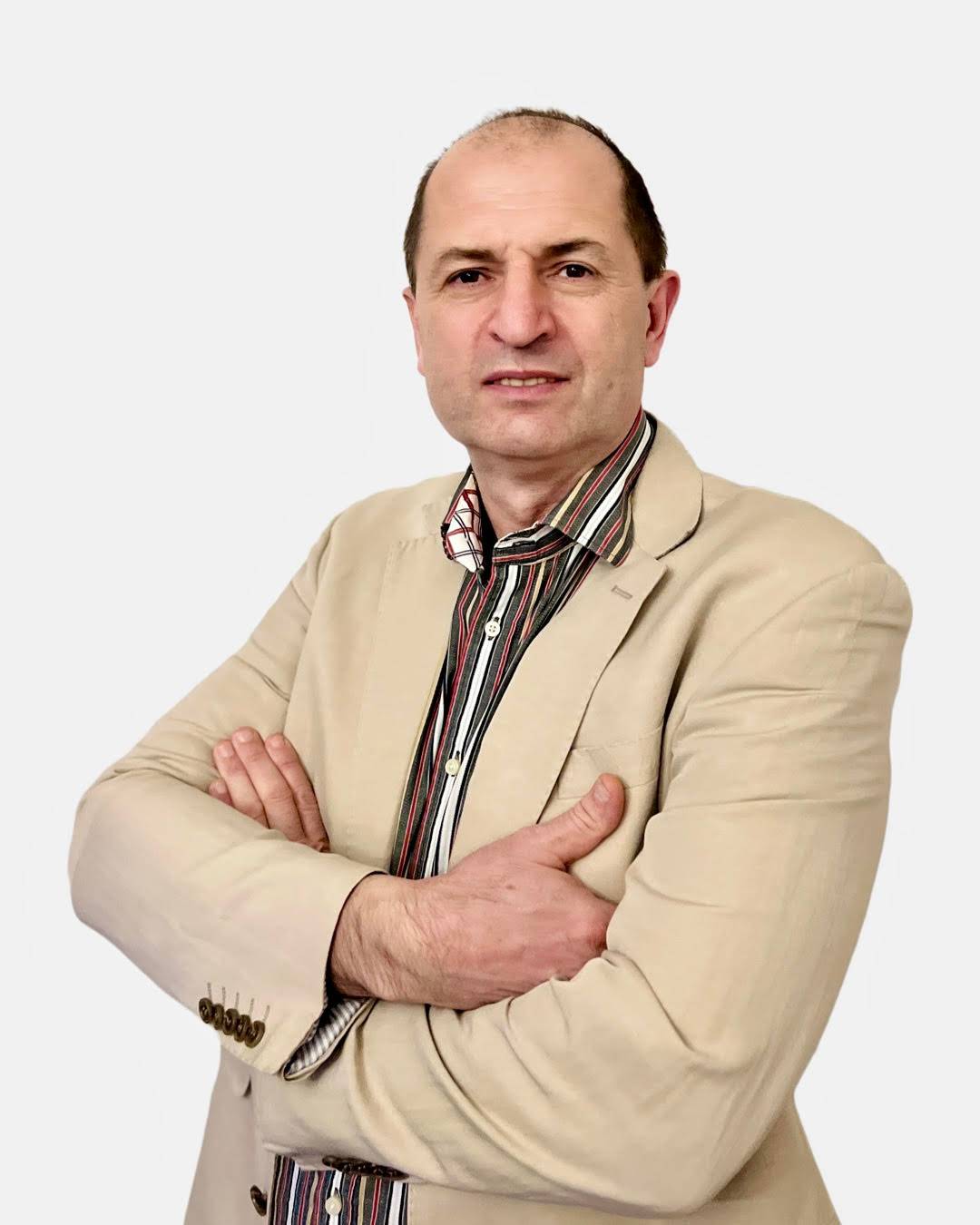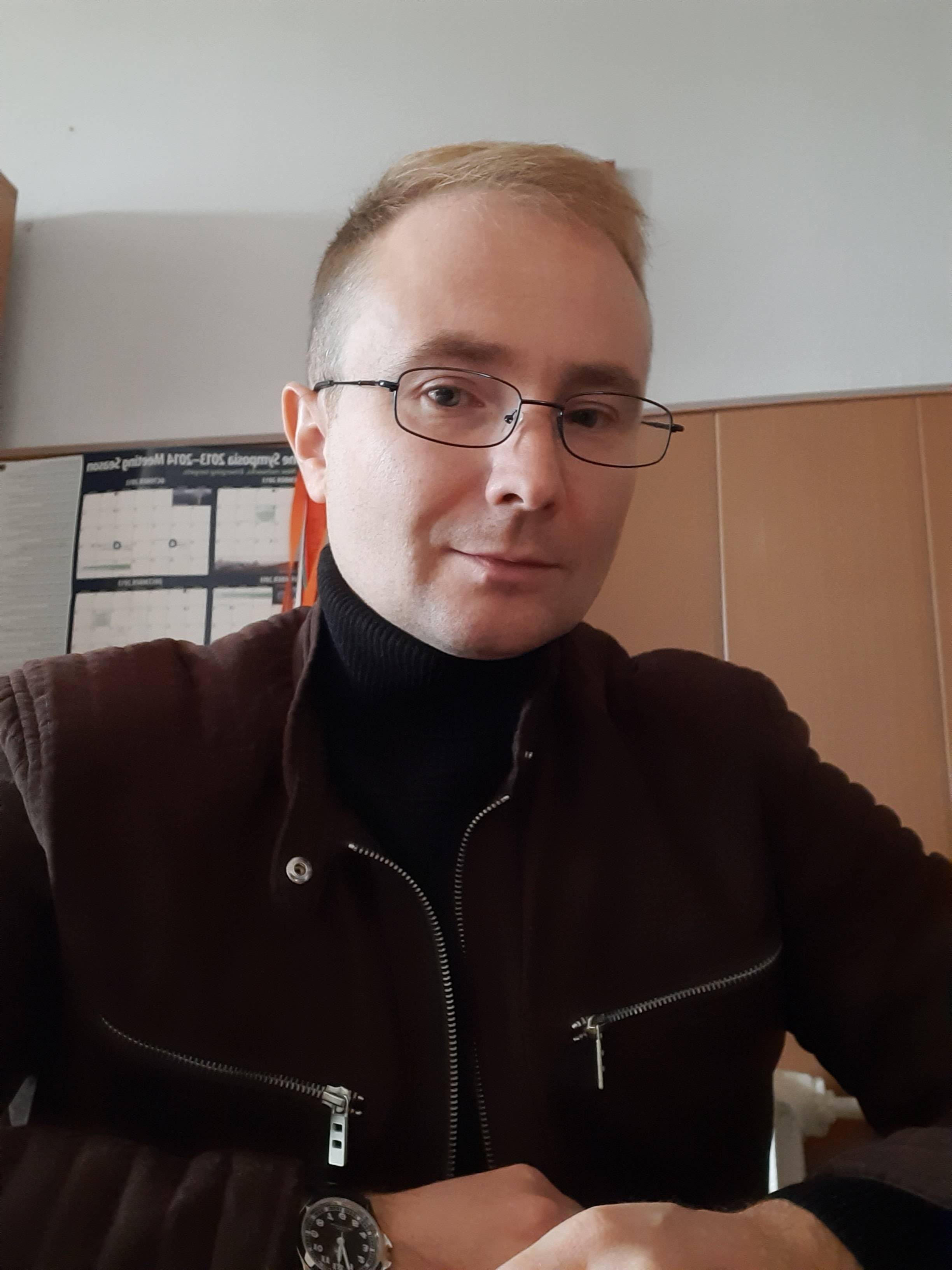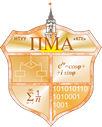Master's Educational and Scientific Programme
A distinctive feature of the Educational and Scientific Programme "Machine Learning and Mathematical Modelling" is that students have the opportunity to experience the role of scientific researchers and developers of high-tech software, which attracts the interest of both industry and international research centers.
The programme is harmonized with the curricula of partner universities within the framework of the international Erasmus Mundus Joint Masters project “Mathematical Modelling, Simulation and Data Science for Industrial and Societal Challenges” (MATHS-DISC). Notably, instruction in the first and third semesters is delivered in English.
Main Research Areas
In recent years, researchers of the Applied Mathematics Department, in collaboration with Master's students, have published a number of research articles in leading international journals, including:
- Journal of Computational and Applied Mathematics (Scopus, 84% in Applied Mathematics. Q1)
- Archive of Applied Mechanics (Scopus, 72% in Mechanical Engineering. Q2)
- Thin-Walled Structures (Scopus, 92% in Mechanical Engineering, Q1)
- Finite Elements in Analysis and Design (Scopus, 94% in Mathematics, Analysis, Q1)
- Mechanics Research Communication (Scopus, 65% in Civil and Structural Engineering. Q2)
- International Journal of Mechanical Sciences (Scopus, 98% in Applied Mathematics Q1)
- Journal of Pipeline Systems Engineering and Practice (Scopus, 60% in Mechanical Engineering. Q2)
Many of these articles hold not only academic but also technological significance. Based on them, the department develops software tools that represent its identity and serve as focal points of collaboration and engagement for both faculty and students. Participation in software development helps Master's students deepen their understanding of the underlying scientific principles and modern computational methods, while also giving them a sense of excitement and fulfilment when their results match or exceed international standards.
Among the projects that already demonstrate strong results — but require further generalisation, enhancement of computational methods, and interface improvement — are the following:
The Method of Conforming Cross-Sections for solving multiphysics problems (mechanics, hydraulics, heat transfer), offering a powerful alternative to the finite element method. This approach has already attracted interest from major stakeholders, and research in this area is being submitted for both domestic and international grants
Ground Drone Motion Optimization Software: includes global and local path planning, processing of noisy position measurements, refinement of direction, curvature, and trajectory, and estimation of dynamic model parameters based on observed motion data
3D Curve Modelling: focuses on constructing spatial curves from both accurate and noisy measurement data. The goal is to generate the most aesthetically pleasing curves for applications such as trajectory planning for drones, including optimization of paths, speeds, movement strategies, and refinement of motion dynamics using known (measured) trajectories and control input data
Curve Scanning and Boundary Detection: involves scanning curves and object boundaries, comparing them for similarity, and processing point clouds from laser scans to identify geometric shapes or curves, analyse geometric properties, and construct smooth surfaces
Blending of Geometric Surfaces and Images: ensures smooth (up to the second derivative) transitions between different surfaces or between painted images (e.g., artworks or photographs). This includes the animation of living object motion using dynamic models (solutions to differential equations) of skeletal lines enveloped by surfaces
These research areas are actively developing at the department, but the number of open problems continues to grow. That is why we are always happy to welcome new Master's students. Together — towards scientific and financial success!
- Bayesian methods
Bayesian machine learning, in particular deep learning and Bayesian optimization (including model hyperparameter optimization). We believe that applying the Bayesian paradigm to the modelling of random phenomena holds significant potential for development. However, at present, these applications are still largely at the research stage, offering substantial opportunities for scientific achievements
- Data Mining
Data mining, in particular using soft computing methods and privacy-preserving data publishing techniques. The development of such areas is especially important in the context of growing volumes of personalized data. Additional attention is given to building recommendation systems that respect user privacy, as well as methods for detecting fraudulent activities in contextual advertising systems. Non-dyadic wavelet transforms present a promising tool for preprocessing complex signals in classification and anomaly detection tasks. All these topics are currently in an active research phase, offering broad opportunities for scientific achievements
- Biomedical Research
The programme stands out for its interdisciplinarity, modernity, and practical orientation across various fields. In particular, it develops critical competencies in working with biomedical and clinical data, modelling complex processes at different levels — from molecules to populations — analyzing uncertainty, assessing risks, and making informed decisions. The use of modern mathematical modelling tools, combined with in-depth knowledge of biomedical research objects, enables graduates to master powerful methods for analytics and forecasting in medicine and related fields. As a result, the programme prepares highly qualified specialists capable of working with experimental and observational data, participating in clinical trials, conducting epidemiological analysis, and implementing advanced medical technologies — all of which are especially important in the current era of personalized medicine and evidence-based healthcare
Some Key Courses
- Geometric Modelling
The course covers both classical and original methods for interpolation and smoothing, including the construction of linear and surface splines such as Bézier curves, B-splines, and NURBS, as well as the original corotational beam and surface splines developed by Prof. I. Orynyak. It addresses problems such as shape completion (when part of a contour is missing), blending (inserting the smoothest possible surface between existing ones), and determining optimal trajectories between two points with given positions, directions, and curvatures. The course also explores principles of motion and trajectory modeling for ground, aerial, and underwater drones. In addition, attention is given to the processing of visual and color data obtained using scanners
- Machine Learning
In this course, students study the fundamentals of supervised and unsupervised learning, including relevant models, methods, and evaluation metrics. Topics covered include classification metrics, decision trees, metric-based, linear, Bayesian, and kernel methods, as well as the support vector machine (SVM) approach. Special attention is given to clustering, association rules, model ensembles, dimensionality reduction, and reinforcement learning. The course also introduces the foundations of statistical learning theory according to Vapnik and Chervonenkis, causal inference in machine learning, and learning with guaranteed accuracy
- Modelling of Complex Systems
The course explores methods for solving complex branched technical systems (electrical, hydraulic, mechanical, geometric) whose components are described by ordinary differential equations. Students learn how to construct the equations governing such systems and how to formulate boundary conditions. The course examines solution methods in cases where the relationships may be nonlinear. It also introduces approaches to optimizing the system structure (the connections between components) to minimize losses
- Numerical Methods of Mathematical Physics
The course covers the finite difference method, the finite element method, the method of weighted residuals, the (Fourier) method of separation of variables, as well as the original method of matched sections developed by Prof. I. Orynyak. These methods are compared using examples of one- and two-dimensional problems of heat conduction and wave propagation in rods and plates, as well as problems of vibration and dynamics of beams and plates
- Architecture and Technology of Big Data Systems
Unlike many academic courses that focus narrowly on concepts or isolated technologies, this course is designed to guide students through the entire lifecycle of Big Data applications, from design and development to deployment and operational management. Participants will not only learn the theoretical foundations of Big Data infrastructures but also gain hands-on experience in architecting solutions, building applications, and running them on real cloud platforms (with a specific attention on Apache Hadoop ecosystem, MapReduce, Spark, HBase, Hive, Pig, and supported programming languages Pig Latin and Hive). By engaging with industry-grade tools and practices, students develop the skills to manage every stage of data-intensive systems, ensuring that what they build can be successfully implemented, maintained, and scaled in real-world organizational environments. This holistic approach makes the course stand out as a true bridge between academic knowledge and professional practice, preparing graduates for leadership in data-driven innovation.
- Data Mining
This course introduces students to methods of clustering and visualizing large-scale data. It covers a range of clustering algorithms, including BIRCH, Batch K-means, DBScan, Cure, WaveCluster, CLARA, and Clarans, as well as Borůvka’s and Forel’s algorithms, and Kohonen maps. Special attention is given to modern data visualization techniques such as Tufte’s principles, Chernoff faces, parallel coordinates, and radial (petal) diagrams. The course emphasizes the practical application of these methods for analyzing complex patterns in large datasets
- Mathematical Modelling in Biomedical and Pharmaceutical Research
This course covers modern methods and approaches for formalizing a wide range of biomedical processes: from intermolecular interactions (ligand–receptor), pharmacokinetics and pharmacodynamics (PK/PD) of drugs, to the spread of infectious diseases, vaccination effectiveness, and population behavioral strategies. Mathematical tools such as stochastic Petri nets, decision trees, Markov and Bayesian networks, and differential equations are examined. Significant emphasis is placed on simulation and probabilistic approaches under uncertainty, sensitivity analysis of parameters, and the assessment of the value of additional information. The practical component focuses on applying models to analyze real experimental and observational biomedical data for informed decision-making. The course develops students’ abilities to think systemically, manage uncertainty, build well-founded models, and make balanced decisions in medicine
- Applied Modelling
This course is designed to develop practical skills in constructing, analyzing, and applying mathematical models to solve complex applied problems. It covers all key stages of modeling: problem formulation, data collection and processing, model development, calibration, verification, result analysis, and interpretation. Various types of models are addressed, including deterministic and stochastic, static and dynamic, discrete and continuous. Core mathematical tools include systems of differential equations, Markov models, regression analysis, optimization methods, and statistical and parametric modeling. The practical component focuses on implementing models in software environments and applying them to real-world problems in technical, economic, biomedical, and social domains. The course cultivates logical thinking, data handling skills, and the ability to select and effectively use relevant mathematical models as tools for practical analysis and decision-making
- Fundamentals of Scientific Research
The course explores science in general as both fundamental and applied, alongside pure and applied mathematics, and their roles within fundamental and technical sciences. Master’s students are introduced to the concept of rankings for institutions, journals, and researchers, including rankings across various disciplines, as well as issues related to manipulation, falsification, and plagiarism. Current trends in applied mathematics are analyzed through the examination of articles published in leading international journals. The preparation of master’s theses involves public discussions of research topics, evaluation of data source reliability, literature review, and verification of results
Some Faculty Members

Courses on the engineering applications of mathematics are taught by Prof. Igor Orynyak. For many years, he served as Head of Department at the H. S. Pysarenko Institute for Problems of Strength of the National Academy of Sciences of Ukraine, where he developed and applied mathematical modelling methods for high-tech industries and supervised the training of young professionals for scientific and technical work. Under his supervision, eight candidates of science (PhD equivalent) have defended their theses. According to the Scopus database, he has authored 185 publications and holds an h-index of 14

The course in Machine Learning will be taught by Prof. Oleg Chertov, a pioneer of the first university-level Data Science educational programme in Ukraine. He is the architect of the largest OLAP system in Ukraine (as of 2005), a consultant for the World Bank and the United Nations Population Fund, and a project coordinator for Horizon 2020, NATO Science for Peace and Security, and the Volkswagen Foundation. He is also a co-author of the monograph Big Data Infrastructure Technologies for Data Analytics and one of the founders of the Big Data Lab at Vodafone Ukraine, where he has been teaching a similar course for the past six years

Courses with a biomedical focus are taught by Sergey Solovyov, Doctor of Pharmaceutical Sciences, PhD in Biology, and Head of the Department of Pharmacy at the Shupyk National University of Healthcare of Ukraine. He is an experienced lecturer and researcher, author of over 100 scientific publications, including in Scopus and Web of Science journals. His areas of expertise include biotechnology, pharmacoeconomics, medical informatics, and mathematical modelling in medicine. He also serves as a scientific consultant to leading Ukrainian and international pharmaceutical companies in these fields

The course on Architecture and Technologies of Big Data Systems is taught by Yuri Demchenko, one of the co-authors of the EDISON Data Science Framework, a recognized standard in the field of data science
